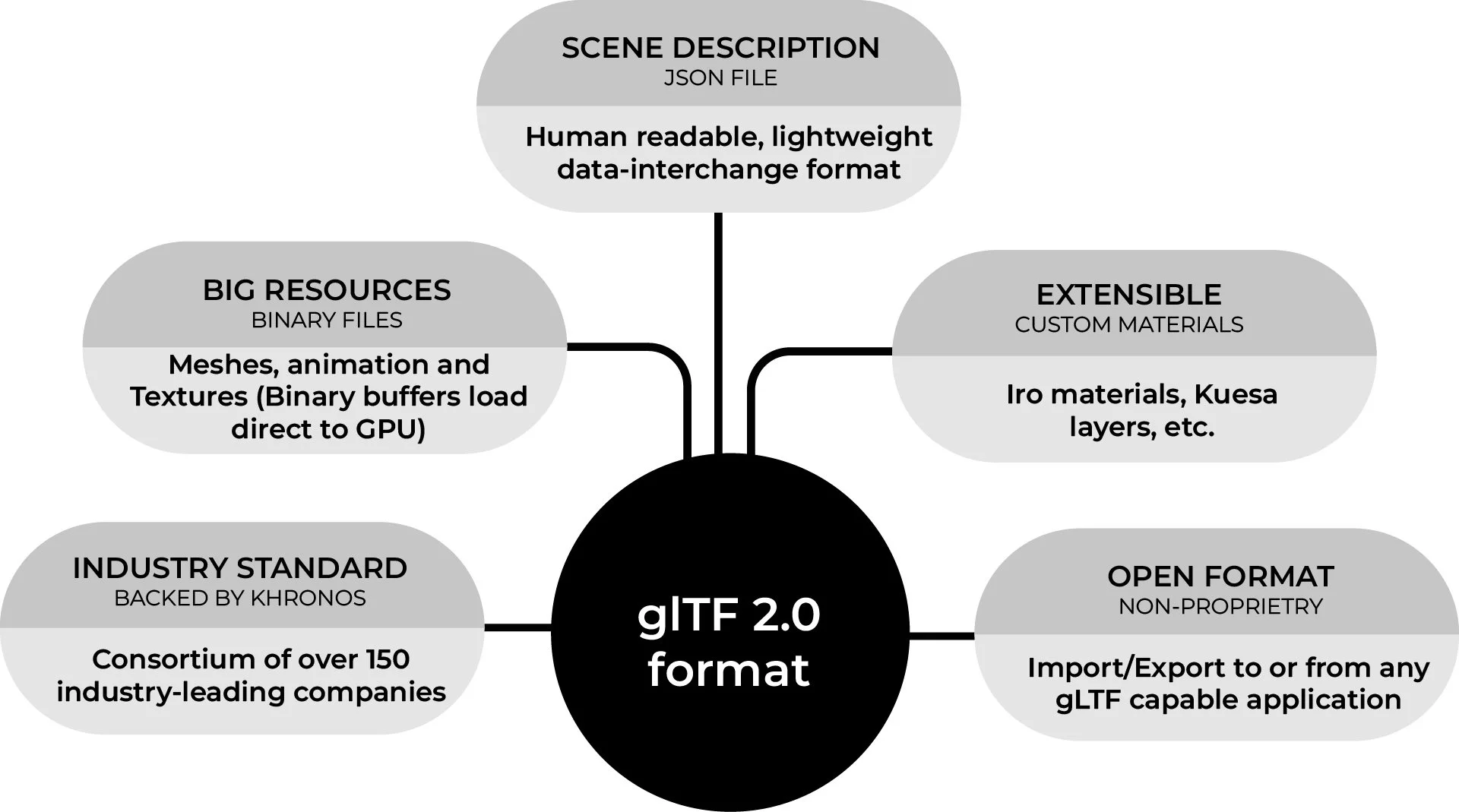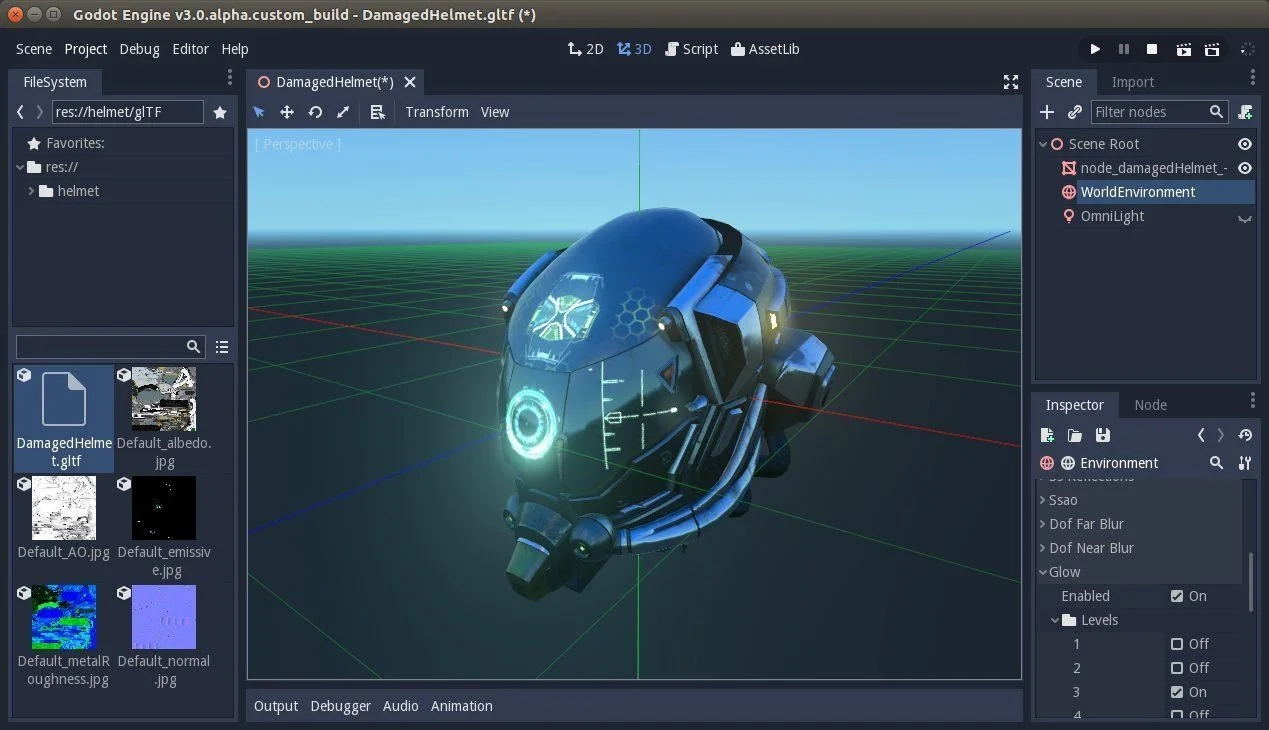Importance of glTF and Khronos' Commitment to 3D Standardization
3D experiences and content creation have been a key and critical component of many companies for many years now and have become the norm for most to digitize their physical content to meet customers in different and inspiring ways using different technologies. Due to the seriousness of this for companies to survive in an ever changing digital landscape, standardization is equally important to meet as many customers in as consistent a way as possible where physical and digital meet seamlessly.
Limitations of Traditional 3D Content Creation
This time-consuming nature of traditional 3D content creation processes coupled with high associated costs places a significant burden on creators. Traditional 3D room crafting is a laborious process involving meticulous consideration of architectural details, light, and shadows. Despite the powerful tools available, creators have to manually model and map each aspect, consuming significant time and resources limiting scale, efficiency, and the rapid iteration needed for dynamic content demands. These constraints hinder the agility required in today's dynamic creative landscape.
The Evolution of glTF: A Standard for 3D Content
The Khronos Group (founded in 2000) is an open, non-profit, member-driven consortium of over 180+ organizations developing, publishing, and maintaining royalty-free interoperability standards for 3D graphics, virtual reality, augmented reality, parallel computation, vision acceleration and machine learning. glTF was conceived in 2012 by members of the Khronos COLLADA working group at SIGGRAPH 2012 where Khronos presented a demo of glTF, which was then called WebGL Transmissions Format and on October 19th, 2015, the glTF 1.0 specification was released.
glTF is a standard royalty-free file format for the efficient transmission and loading of three-dimensional scenes, models, engines & applications. A glTF file uses one of two possible file extensions: .gltf or .glb. An open standard developed and maintained by the Khronos Group, it supports 3D model geometry, appearance, scene graph hierarchy and animation, and as such, its creators have described it as the "JPEG of 3D.”
The second version, glTF 2.0, was released in June 2017, and is a complete overhaul of the file format from version 1.0, with most tools adopting the 2.0 version. Physically based Rendering (PBR) was added,replacing WebGL shaders used in glTF 1.0 and other upgrades.
The Significance of glTF in Industry and Beyond
As of 2019, many companies, including IKEA, Wayfair, Target, Sketchfab, Facebook, Microsoft, Google,Adobe, TurboSquid, Unreal Engine, use and support the glTF (GL Transmission Format) and GLB (GLTransmission Format Binary file) formats. glTF has been noted as an important standard for augmented reality, integrating with popular modeling software such as Autodesk Maya, Autodesk 3ds Max, and Blender and in July 2022, Khronos glTF 2.0 was released as an ISO/IEC International Standard, placing glTF on the world map as the 3D file format of choice to ensure consistent customer experiences.
The 3D Formats Working Group (that sits inside The Khronos Group) works very closely with The 3D Commerce Working Group where use cases, business needs and ideas related to e-commerce are discussed and once agreed, passed to 3D Formats. There task groups are formed to work on extensions, new features, tools etc. As glTF grows in adoption and increasingly is used as a standard across many forms of media, extensions and improvements benefit the entire 3D industry.
With the use of standardization, tools, and improvements to glTF, any industry can streamline their process and workflow knowing that the content and experience they are creating will be accessible to many people across the globe and an end user on a laptop, desktop or mobile device can discover the experience as it was originally intended.
We see the use of glTF in scanning historical artifacts to provide interactive 3D documentation that will last forever, building critical medical and surgical experiences that can enable surgeons to see inside the human brain through VR, bring physical furniture digitally inside a home to test fit and style without ever visiting the store, test out a car online, see it in augmented reality or take it for a test drive in VR, all through the power and standardization of glTF.
At Avataar, we have adopted the use of glTF workflows for many years due to this standardization. Our clients need content and experiences that anyone can access on any technical platform. They also want content that brings with it scalability, allowing them to take the assets we make for them and re-use wherever needed without additional conversion or formats. With additional work being done on glTF extensions, PBR advancements and tooling, the glTF format is growing from strength to strength and is the 3D format of choice.
glTF: The Key to Standardization in the Metaverse
The Metaverse is also another area that will only benefit hugely from standardization as millions of users will want access to content and experiences across a huge range of technical platforms and without standardization, end users will experience the Metaverse differently, without consistency and struggle to connect on whatever platform they choose. glTF again plays a key role here as the 3D format of choice, it will provide stability in an ever-changing landscape.
Finally, with more companies and people getting involved in The Khronos Group’s work, the working groups and pushing standard forwards, glTF will evolve stronger and continue to grow as the fully capable 3D format of choice. As film, VFX and other industries that have predominantly been CG based are now also heading into runtime workflows, glTF will become a necessity. Already platforms like Unreal or Unity encourage the use of glTF files due to their standardization and ease of use and the groups in The Metaverse Standards Forum are also constantly reaching out to the 3D Formats Working Group (thehome of glTF) for insights, advice and involvement in innovation and exploration, ensuring their future thinking is stable and based upon a solid foundation of decades of experience and work.





